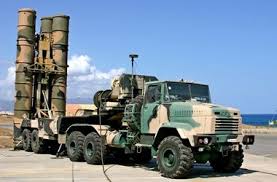Adequacy analysis of radar support model for the air defense forces and means
Abstract
The article presents an approach to the adequacy analysis of the radar support model for air defense forces and means using the method of reverse transition. The approach idea is based on a description of the formal consequences of the hypotheses and assumptions adopted, based on the peculiarities of radar support for air defense forces and means. The criterion for the adequacy of the model evaluation is the equality of relative losses mathematical expectations of the of radio troops formation, for the arbitrary law of the distribution of random events by performing operations with only mathematical expectations.
The convenience of the described approach is determined by its simplicity and clear logic in determining the formal consequences of the hypotheses and assumptions adopted and creates the preconditions for its use, if necessary, to take into account additional factors, the importance of which influence on the results of radar support may change during the radar support.
Downloads
References
Barabash, O., Hohoniants, S. and Titarenko, S. (2015), “The simplest model of functioning a separate element of the executive system when solving typical tasks”, Riadenie bezpečnosti zložitých systémov, Akadémia ozbrojených síl generála Milana Rastislava Štefánika, No. 1, pp. 153-158.
Hohoniants, S.Yu., & Polishhuk, S.V. (2016). “Zaghaljni polozhennja udoskonalenoji metodyky ocinky efektyvnosti radiolokacijnogho zabezpechennja bojovykh dij ughrupovannja syl i zasobiv protypovitrjanoji oborony” [General provisions of the advanced methodology for assessing the efficiency of the air defense forces radar support]. Nauka i tekhnika Povitrjanykh Syl – Science and Technology of the Air Force of Ukraine, No. 4 (25), pp. 70-73. [in Ukrainian].
Hohoniants, S.Yu., and Polishhuk, S.V. (2016). “Obgruntuvannja intensyvnostej zminy funkcionaljnykh staniv mobiljnogho radiolokacijnogho kompleksu” [Change intensity substantiation of mobile radar complex functional states]. Nauka i tekhnika Povitrjanykh Syl – Science and Technology of the Air Force of Ukraine, No. 3 (24), pp. 90-92. [in Ukrainian].
Hohoniants, S.Ju. and Polishuk, S.V. (2016), “Dekompozycija elementarnogho procesu radiolokacijnogho zabezpechennja” [The decomposition of the elementary radar process], Modern Information Technologies in the Sphere of Security and Defence, No. 1, pp. 20-23. [in Ukrainian].
Hohoniants, S.Yu., & Polishhuk, S.V. (2016). Model radiolokacijnogho zabezpechennja bojovykh dij ughrupovannja syl i zasobiv protypovitrjanoji oborony v operacijakh [Combat operations radar support model of the forces grouping and air defense means in operations]. Infomation Processing Systems, No. 3 (130), pp. 126-130. [in Ukrainian].
Radecjkyj, V.Gh., Rusnak, I.S. Zagorka, O.V. (2007), “Metodologichni zasady obgruntuvannya racionalnyx form ta sposobiv zastosuvannya ugrupovan vijsk (syl)” [Methodological principles of justification of rational forms and methods groups of troops (forces) using], National Defense University of Ukraine, Kyiv, 288 p. [in Ukrainian].
Ghorodnov, V. P., Gh. Drobakha, A. M., Jermoshyn, O. М. (2004), “Modeljuvannja bojovykh dij vijsjk (syl) protypovitrjanoji oborony ta informacijne zabezpechennja procesiv upravlinnja nymy (teorija, praktyka, istorija rozvytku)” [Methodological principles of justification of rational forms and methods groups of troops (forces) using], KhUPS, Kharkiv, 409 p. [in Ukrainian].
Pavlenko, M.A. Hohoniants, S.Yu., and Polishhuk, S.V. (2017). “Podkhod k ocenyvanyju effektyvnosty radyolokacyonnogho obespechenyja potrebytelej dlja kontrolja vozdushnogho prstranstva” [Approach to evaluating the effectiveness of consumer radar to control airspace]. Uraljskyj nauchnyj vestnyk – Оралдын гылым жаршысы, No. 1(161), pp. 86-94.
Radecjkyj, V.Gh., Rusnak, P.V. and Shhypansjkyj, P.V. (2017), “Protypovitrjana oborona u lokaljnykh vijnakh i zbrojnykh konfliktakh: navachljno-metodychnyj posibnyk” [The air defense of local wars and armed conflicts], National Defense Academi of Ukraine, Kyiv, 254 p. [in Ukrainian].
Romanchenko, I.S., Zaghorka, O.M., Butenko, S.Gh. and Dejnegha, O.V. (2011), “Teorija i praktyka borotjby z malorozmirnymy nyzjkolitnymy ciljamy (ocinka mozhlyvostej, tendenciji rozvytku zasobiv PPO): monohrafiia” [The theory and practice of combating small-scale low-caliber purposes (assessment of opportunities, tendencies of development of means of air defense], Polissya, Zhytomyr, 344 p. [in Ukrainian].
Snycarenko, P.M. (2010). “Metodycheskye osnovy obosnovanyja trebovanyj k voennym systemam dystancyonnogho monytoryngha okruzhajushhegho prostranstva dlja vyjavlenyja y soprovozhdenyja podvyzhnykh ob’ektov pry uslovyy resursnykh oghranychenyj na ykh sozdanye” [Methodical bases of requirements substantiation for military systems of the surrounding space remote monitoring for identifying and tracking moving objects, subject to resource constraints on their creation]. Prykladnaja radyoelektronyka – Applied radioelectronics, No. 3, pp. 229-241.
Yarosh, S.P. (2012), “Teoretychni osnovy pobudovy ta zastosuvannia rozviduvalno-upravliaiuchykh informatsiinykh system protypovitrianoi oborony” [Theoretical foundations of the construction and application of intelligence-control information systems of air defense], KhUPS, Kharkiv, 512 p. [in Ukrainian].

Abstract views: 433 PDF Downloads: 195
Copyright (c) 2018 Spartak Hohoniants, Valerij Kryshhenko

This work is licensed under a Creative Commons Attribution 4.0 International License.
The authors agree with the following conditions:
1. Authors retain copyright and grant the journal right of first publication (Download agreement) with the work simultaneously licensed under a Creative Commons Attribution License that allows others to share the work with an acknowledgment of the work's authorship and initial publication in this journal.
2. Authors have the right to complete individual additional agreements for the non-exclusive spreading of the journal’s published version of the work (for example, to post work in the electronic repository of the institution or to publish it as part of a monograph), with the reference to the first publication of the work in this journal.
3. Journal’s politics allows and encourages the placement on the Internet (for example, in the repositories of institutions, personal websites, SSRN, ResearchGate, MPRA, SSOAR, etc.) manuscript of the work by the authors, before and during the process of viewing it by this journal, because it can lead to a productive research discussion and positively affect the efficiency and dynamics of citing the published work (see The Effect of Open Access).















